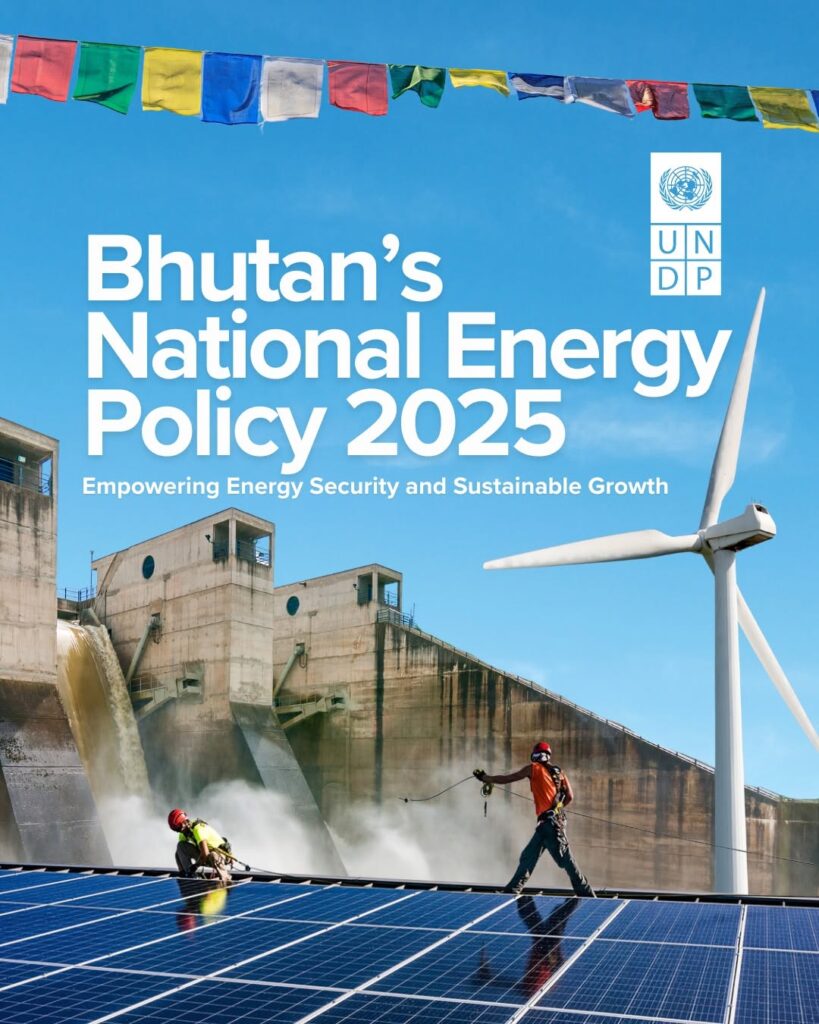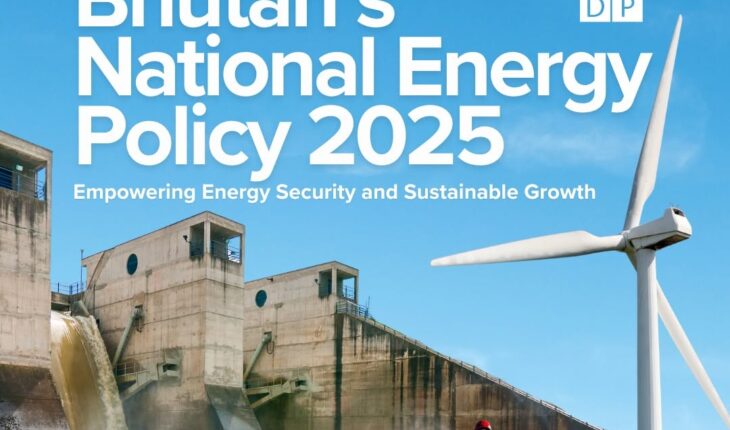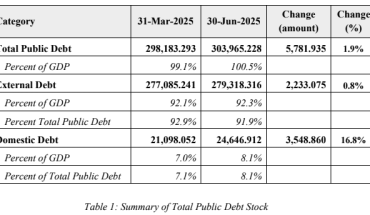
Bhutan Charts Unprecedented Energy Growth with 25,000 MW Goal by 2040
TIL BDR GHALLEY
Thimphu
The Ministry of Energy & Natural Resources (MoENR) has unveiled the National Energy Policy 2025, signaling a transformative shift in the nation’s approach to energy security, sustainability, and economic growth.
With an ambitious vision to achieve an installed capacity of 25,000 MW by 2040, the policy sets the stage for expanded hydropower projects alongside diversified development of renewable energy sources.
Approved by the Cabinet on June 5, 2025, this policy aims to enhance Bhutan’s energy resilience by reducing overreliance on a single resource. It also positions the country as a green energy leader in the region.
The new policy integrates and supersedes previous frameworks, including the Sustainable Hydropower Development Policy (2021) and the Alternative Renewable Energy Policy (2013).
“Hydropower is a cornerstone of our economic progress,” said Gem Tshering, Minister for MoENR, in the policy’s foreword. “But to ensure long term energy security and sustainable growth, diversification of our energy portfolio is no longer optional, it is imperative.”
Bhutan’s urgency to act stems from a rapidly increasing energy demand. In 2024, the country’s peak electricity load exceeded firm power capacity by 125 percent, forcing the nation to rely on power imports, particularly during the dry winter season when hydropower generation diminishes significantly.
As of June 2025, Bhutan’s total installed capacity stands at 3,490 MW, which accounts for only 11 percent of its vast 33,000 MW hydropower potential.
Meanwhile, solar and wind energy contribute a modest combined capacity of just 6 MW, underscoring the country’s heavy dependence on hydropower.
This growing energy gap is further aggravated by the impacts of climate change. Erratic rainfall patterns and accelerated glacial melt are affecting river flows, thereby disrupting electricity generation.
The Minister warned that “our mono-resource dependence has become increasingly vulnerable,” emphasizing the need for urgent diversification.
To address these pressing challenges, the policy outlines a strategic plan to expand Bhutan’s generation capacity to 25,000 MW by 2040. The expansion includes an estimated 15,000 MW from hydropower, complemented by 5,000 MW from solar energy.
Additionally, contributions are expected from other renewable sources such as wind, geothermal, biomass, and emerging technologies including hydrogen.
The policy highlights the potential of green hydrogen, setting an ambitious production target of 70,000 tons by 2050 aimed at supporting transportation and industrial sectors. Efforts in this area will be guided by the recently introduced Hydrogen Roadmap 2024.
Despite Bhutan’s reputation for 100 percent green electricity generation, its energy consumption in 2022 was comprised of 62 percent thermal sources such as biomass, coal, and petroleum products, with electricity making up the remaining 38 percent.
The industrial sector alone accounted for 63 percent of total energy consumption, followed by buildings at 21 percent and transport at 15 percent.
One of the most significant policy shifts is the opening of Bhutan’s energy generation sector to private investment. The government will retain a minimum 51 percent ownership in medium to mega hydropower projects while permitting up to 49 percent participation by domestic and foreign partners through Public-Private Partnership (PPP) models.
In contrast, small hydropower projects will be restricted to domestic investors only, also capped at 49 percent ownership, with strict requirements for transparency in funding sources and prohibitions on divestment to foreign partners in domestically led projects.
The policy recognizes that “achieving 10x capacity growth by 2040 requires capital, innovation, and speed,” actively encouraging strategic partnerships with multilateral banks, sovereign wealth funds, and credible private developers.
Institutionally, the Ministry of Energy and Natural Resources (MoENR) will oversee policy formulation and sector coordination, with its Department of Energy (DoE) responsible for planning, allocation, project concessions, technical standards, and cross-border electricity trade.
The Electricity Regulatory Authority (ERA) will regulate licensing, tariff setting, and grid operations, while the Bhutan Power System Operator (BPSO) will manage national grid scheduling, including cross-border energy transactions.
State utilities such as Druk Green Power Corporation (DGPC) and Bhutan Power Corporation (BPC) will remain charged with project development, transmission, and retail distribution.
The policy also emphasizes modernization of infrastructure through adoption of advanced technologies including AI-based grid management, Battery Energy Storage Systems (BESS), smart meters, and digital twin systems.
These innovations aim to improve the reliability, security, and resilience of Bhutan’s energy supply. To serve regions where grid access is challenging, Distributed Energy Resource Systems (DERS) and Renewable Energy Service Providers (RESPs) will be deployed.
Rooftop solar and community-based renewable energy solutions will also be promoted to enhance local energy independence.
Environmental and social safeguards are integral to the policy framework. All renewable energy projects must undergo comprehensive Environmental and Social Impact Assessments (ESIA) and comply with national and international environmental standards.
Hydropower developers are mandated to maintain minimum flow levels to protect river ecosystems and to conduct integrated geohazard assessments in climate-sensitive catchments.
The policy makes clear that mitigation of environmental risks and responsibilities related to resettlement will be borne by the project developers.
To foster inclusive growth, the policy stresses the importance of local workforce participation during both construction and operational phases. Expatriate employment will be permitted only for specialized roles, accompanied by knowledge transfer programs. Educational institutions and vocational training programs will be aligned with sectoral needs to build local capacity.
The DoE also plans to engage Project Management Consultants (PMCs) and establish a National Green Energy Panel to support innovation and technical capacity building.
In terms of power allocation, the policy sets clear priorities to ensure supply during shortages. Essential public institutions such as hospitals and schools will receive priority, followed by individual households, commercial establishments, and industrial users.
During load-shedding, this order will be reversed. The policy further requires that all generation plants meet domestic supply obligations, including the provision of 13 percent free power from large hydropower projects to the government.
Financing mechanisms outlined in the policy include tapping into climate finance, green bonds, foreign direct investment (FDI), and blended financing models.
Commercial banks will be mandated to allocate a portion of their annual loan portfolios specifically for renewable energy and energy efficiency projects.
Hydropower earnings, reinvested through dividend policies by the Ministry of Finance and Druk Holding & Investments (DHI), will support the renewable energy sector.
In addition, fiscal incentives will be aligned with existing tax and investment laws, with provisions to revise them to maintain competitiveness.
On the market front, the policy mandates the establishment of a domestic energy trading platform and promotes regional power market integration.
Bhutan aims to expand cross-border green electricity trade through bilateral and multilateral agreements. Mechanisms such as Renewable Purchase Obligations (RPOs), Renewable Energy Certificates (RECs), and carbon markets will be explored to monetize the country’s clean energy assets.
Project developers will also be permitted to trade carbon credits under government oversight and applicable taxation.
Tariff structures for generation, transmission, and distribution will be designed to reflect actual costs and benchmarked against regional markets.
The policy encourages long-term Power Purchase Agreements (PPAs) to ensure revenue stability. It also plans to introduce Time-of-Use pricing, seasonal tariffs, and dynamic pricing systems to manage demand and improve grid efficiency.
The Department of Energy will spearhead energy conservation efforts through audits, building efficiency codes, and appliance labeling programs.
The policy further supports e-mobility, biofuels, and fuel cell vehicles under Bhutan’s national energy efficiency roadmap.
The Department of Energy will be responsible for developing the instruments and strategies necessary to implement the policy. It will conduct regular assessments and amend the policy as needed to respond to changing sectoral and national priorities.
Officials have described the National Energy Policy 2025 as a “watershed moment” expected to guide Bhutan’s energy future through innovation, sustainability, and strategic collaboration.
“We are not just building power plants,” Minister Gem Tshering concluded. “We are forging a secure, sustainable, and prosperous future for Bhutan, powered by green energy.”



